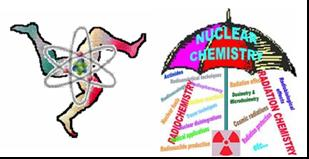Speaker
Prof.
Alexander Bolsunovsky
(Institute of Biophysics SB Russian Academy of Sciences)
Description
The Yenisei River is contaminated with artificial radionuclides released by one of the Russian nuclear facilities (Mining-and-Chemical Combine), which has been producing weapons-grade plutonium since 1958. The submerged plants growing on radioactively contaminated river bottom sediments contain artificial radionuclides. Sequential extraction techniques are the most common method of studying radionuclide speciation in sediments and submerged plants. The aim of this study was to show that the sequential extraction approach can be successfully used to study remobilization of artificial radionuclides from sediments and submerged plants of the Yenisei River. Sediment and submerged plant samples were collected from the Yenisei River at different distances downstream of the Combine.
Sequential extraction technique proposed by Tessier and modified by Klemt et al. (2002) was used to investigate sediment samples. Sequential extraction was performed in sediments that were in different states (wet, dried, and re-wetted). Some of the samples of sediments and the submerged plants were spiked with 241Am or 242Pu. The new sequential extraction scheme was used in this study for submerged plant samples, and the resulting fractions were exchangeable, adsorbed fractions, organics, and mineral residue.
Sequential extraction performed on samples of the sediment cores collected near the Combine showed that the largest amounts of the radionuclides were extracted from such fractions as organics, oxides and hydroxides. We arranged radionuclides in the following sequence, showing their relative mobility in the upper layers of the cores: 90Sr ≈ 241Am ≈ 152Eu > 60Co >238U> 239,240Pu > 137Cs. The transuranic elements 239Np, 242Pu and 241Am were found in the intracellular fraction of the submerged plant biomass, and this suggested their active accumulation by the plants via the analog mechanism. Localization of radionuclides in the intracellular fraction of the biomass determines their further migration along trophic chains of the ecosystem and the subsequent toxic effect.
Author
Prof.
Alexander Bolsunovsky
(Institute of Biophysics SB Russian Academy of Sciences)
